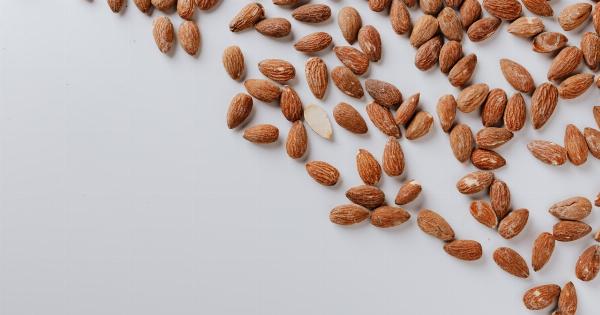Atherosclerosis is a cardiovascular disease characterized by the narrowing and hardening of arteries. It occurs due to the accumulation of plaque made up of cholesterol, fatty acids, calcium, and other substances.
Atherosclerosis increases the risk of heart attacks, strokes, and other cardiovascular complications. While there are various factors that contribute to the development of atherosclerosis, diet plays a crucial role. Counting calories at breakfast can be an effective strategy in preventing and managing atherosclerosis.
The Link Between Diet and Atherosclerosis
Research has shown that the consumption of a high-calorie diet, especially one rich in saturated and trans fats, can significantly increase the risk of developing atherosclerosis.
These unhealthy fats contribute to the build-up of cholesterol and fatty deposits in the arteries, leading to their narrowing and reduced blood flow. By counting calories at breakfast, individuals can make conscious choices that promote cardiovascular health and help prevent atherosclerosis.
Understanding Caloric Needs
Before beginning to count calories at breakfast, it is important to understand individual caloric needs. Caloric requirements vary based on factors such as age, sex, weight, height, and activity level.
Consulting with a healthcare professional or a registered dietitian can help determine the appropriate caloric intake for optimal health and weight management.
Creating a Healthy Breakfast Meal Plan
Developing a meal plan for breakfast that aligns with caloric goals and promotes heart health is essential. Here are some tips for creating a healthy breakfast menu:.
1. Choose Nutrient-Dense Foods
Include foods rich in vitamins, minerals, and fiber to ensure a balanced breakfast. Opt for whole grains, such as oats or whole wheat bread, as they provide complex carbohydrates and fiber.
2. Add Lean Protein Sources
Protein is an essential macronutrient that aids in muscle repair and growth. Incorporate lean protein sources like eggs, Greek yogurt, or low-fat dairy products into breakfast to promote satiety and support overall health.
3. Emphasize Healthy Fats
While saturated fats are associated with atherosclerosis, healthy fats like avocados, nuts, and seeds offer numerous health benefits. These fats help reduce inflammation and improve heart health.
Be mindful of portion sizes, as healthy fats are still calorie-dense.
4. Include a Variety of Fruits and Vegetables
Fruits and vegetables are rich in antioxidants, fiber, and other essential nutrients.
Incorporating a colorful array of fruits and vegetables into breakfast can contribute to reducing the risk of atherosclerosis and promote overall cardiovascular health.
5. Limit Added Sugars
Excessive consumption of added sugars, commonly found in processed cereals, pastries, and sweetened beverages, can contribute to weight gain and increase the risk of atherosclerosis.
Choose naturally sweetened options or consume moderate amounts of added sugars.
Benefits of Counting Calories at Breakfast
Counting calories at breakfast offers several benefits for preventing and managing atherosclerosis:.
1. Portion Control
By monitoring calorie intake at breakfast, individuals can practice portion control, which helps in maintaining a healthy weight. Overeating and consuming excess calories can lead to weight gain, a significant risk factor for atherosclerosis.
2. Improved Nutrient Distribution
Counting calories ensures that individuals distribute their nutrient intake appropriately throughout the day.
Breakfast is an ideal time to include a variety of nutrients necessary for heart health and overall well-being, setting a positive tone for the rest of the day.
3. Conscious Food Choices
Counting calories encourages individuals to make conscious food choices by considering the nutritional value of their breakfast options. This strategy discourages the consumption of high-calorie, unhealthy foods that contribute to atherosclerosis.
4. Weight Management
Atherosclerosis is closely associated with obesity and excess weight.
Counting calories at breakfast allows individuals to manage their weight effectively by consuming an appropriate amount of calories that aligns with their caloric needs and weight goals.
Conclusion
Counting calories at breakfast is a practical strategy that can significantly contribute to the prevention and management of atherosclerosis.
By choosing nutrient-dense foods, emphasizing lean protein, healthy fats, and limiting added sugars, individuals can promote heart health and reduce the risk of atherosclerosis. Additionally, practicing portion control and conscious food choices aids in weight management, which has a direct impact on cardiovascular health.
Begin the day on a nutritious note by counting calories at breakfast and take a step closer to atherosclerosis prevention.































